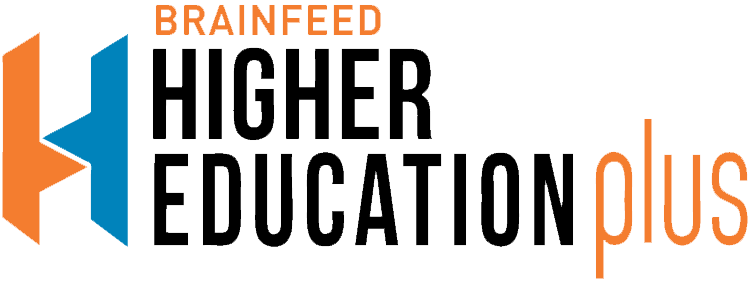The Coronavirus epidemic has changed the world. Though capitalist economies will take considerable time to recover from the aftereffects, this virus brought about a remarkable transformation in the global outlook. From climate change to politics to education – no sector is left untouched.
Since it has gripped India, Covid-19 has caused havoc in the education sector causing panic and leading schools to shut down to contain person to person transmission, especially among students who usually work nearby. State and central governments have announced measures like postponing and in some cases, cancelling exams.
These steps may mean promoting students to the next grade without exams and early summer vacations, it may also mean a dent in the learning curve of all affected. At such times, it is imperative that educational institutions think of innovative and easily implementable ways to ensure that the student does not suffer for too long.
One solution to this can be methods for remote learning which will ensure that education continues in remotest parts in the most trying circumstances.
Here are a couple of observations and solutions to consider, which can be implemented in India, that can also work globally in the post Covid-19 era.
- Greater reliance on virtual education: One of the most remarkable things that happened for the education sector during the epidemic was the whole-hearted and urgent adoption of Virtual Education. Several schools and educational institutions all over India set up the system of remote learning and virtual classrooms to deliver lessons to their students who may have faced quarantine for a suspected infection.Those with virtual facilities can attend classes from the comfort of their homes, connect with fellow students online and exchange notes and projects. Virtual classrooms will be beneficial to the student community irrespective of their economic and health conditions.
But the bigger picture here is the embracing of technology which will last far longer than the Covid-19 pandemic. It will help students interact with peers from different parts of the world, for information exchange, group activities and collaborations, or just general experience sessions. This greatly benefits them as they can gain a world view and perspective from the comfort of their homes.
Currently, virtual education and smart learning are still in its nascent stages. Though many tools can be applied to make remote learning an effortless experience, one can soon expect an influx of more sophisticated tools and technology which will bring Virtual Classrooms at par with real-time learning.
With the help of customisation and virtual classrooms, educators can simply put a system in place where learning material can be sent to students based on their needs and learning capability thus ensuring that the damage due to the absentia is erased.
In a post-Covid world, virtual education is going to continue being a relevant mode of learning, primarily due to its benefits of deeper reach and more flexibility. Educators can also expect to see a great rise in the demand for modern and highly functional Edu-Tech models.
- Impact of virtual learning on students and teachers. The scope of future technologies post COVID 19: Students can benefit from getting an education at their convenience. Lessons can be recorded in real-time and replayed at all times for revision. Collaboration with peers is made easier, no matter where they are around the world.No doubt that virtual classrooms are a great boon to teachers as well. Supported by state-of-the-art software and technology, they can provide lessons to students irrespective of their geographical location thus helping education penetrate into deeper levels of society. Hence, for teachers, the benefit will be in keeping themselves updated to new technologies. Fewer students in the classroom will mean teachers will be able to give them personal attention. At the same time, those logging in virtually will have an easier time with the teachers, as they can interact at the teacher’s convenience.
For future technologies, we will have to wait and see. Virtual Classrooms, if implemented well, will be a very popular option. Audio textbooks, video pre-recorded lessons, Webinars and online examinations could be the next big thing.
- Virtual education means more screening timing, its impact especially to the technical course: That is just one side of the perception. It need not just be screen time for students. Cameras and audio elements would enable practical illustrations to be conducted as well. For example, robotics will be possible if students are equipped with the right tools. Of course, there are hiccups like lab practicals for Physics, Chemistry and Biology. Even if students may not get hands-on time at these practicals, good Audio-Visual elements in the school would help students understand the steps easily.
- Solutions available for rural schools and Anganwadi centers: Anganwadi students may be too young for Virtual Classrooms. Students of that age need to be kept more engaged with physical activities. Rural schools, if they have the right equipment and investment, may get on board sooner than expected. But, even if the school doesn’t, the humble smartphone can act as an option for students anywhere in the country, where virtual classrooms can be accessed with little investment and much success.
- Assessment methods, unfamiliar technology and admission process: It’s a matter of time before examinations will go online. Assessment methods will then follow. As for technology, it may be unfamiliar at first, but it can be learnt. For students, digital language is their language. So for them, it will not be very difficult to keep themselves abreast of the latest technological advances.Even admission processes can be virtual. With webpages, landing pages and websites now supporting admissions process and e-signatures accepted widely, as long as forms can be filled online, and required paperwork attached, admissions processes won’t have a hard time being virtual and fast at the click of a button. Infact many institutions have already implemented it successfully.
The current global conditions may have been a big bump in the road to education. But, it is also a good opportunity to embrace the new and correct methods for the betterment of society.
While educators are working tirelessly to compensate for lost time and bring students up to speed once schools reopen normally, the silver lining to this dark cloud is the embrace of newer methods that make education relevant and accessible to all.



















































